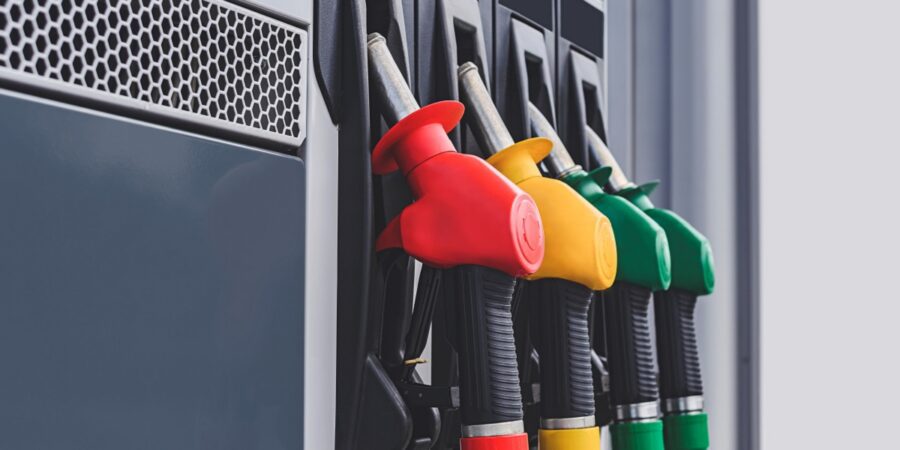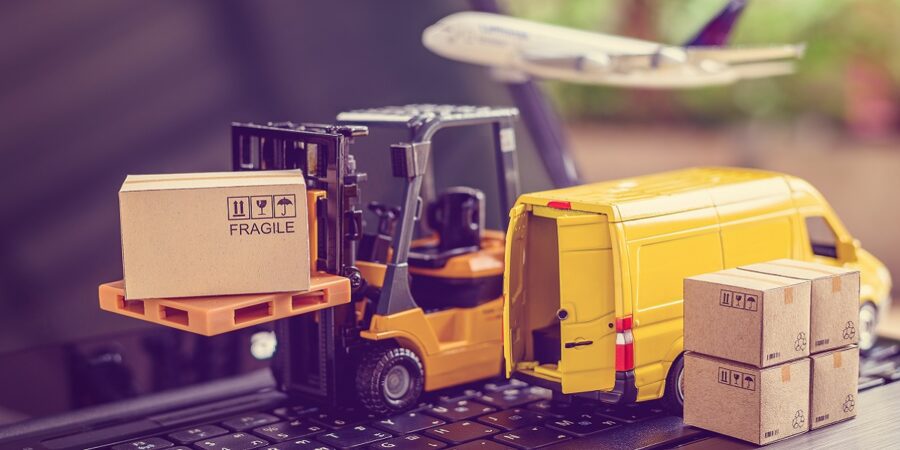
Retail
Solving the Problem of Last-Mile Delivery to the Customer
Written by: Parcel Pending
5 Min Read
Published: June 24, 2021
Updated: April 3, 2023
How Retail Trends are Influencing Click and Collect
In-person shopping is not dead. Retail stores continue to play a big role in the customer experience, bringing in impulse purchases, acting as brand builders, and efficiently traversing “the last mile” to get purchases into the hands of consumers and improve their customer retention rate. In fact, Target estimates that it costs an average of 40% less when shoppers pick up their orders curbside or in-store, compared with shipping from a warehouse1.
Let’s take a look to see how ROI retail strategies like curbside pick-up, BOPIS, and Buy Online, Pick-up in Locker (BOPIL®) compare.
How the Number Add Up in Favor of BOPIL
| Curbside Pick-up | BOPIS (Buy Online, Pick Up in Store) | BOPIL (Buy Online, Pick-up in Locker) | |
| Average Time to Retrieve Order | 5.5 minutes | 4 minutes2 | >30 seconds |
| Average Time to Return an Order | Limited availability, substantial wait time | 3-5 minutes (once greeted by a store associate) | >30 seconds |
| Estimated Retailer Labor Cost ($15/hr) | $1.38 per order | $1.00 per order | $0.13 per order (employee time = 30 seconds) |
| Perceived Wait Time for Customers | 8-12 minutes | 2-5 minutes | >2 minutes |
| Sales Impact & Customer Loyalty | Sales increases of 2x (approximately double) | 85% of consumers buy additional items when picking up a BOPIS order | Customers are 4x more likely to repeat purchase if the wait is under 2 minutes |
The Changing Face of Retail Post Pandemic
During the height of the pandemic, experts predicted the end of the mall and in-person shopping as consumers switched to eCommerce. The reality is quite different.
Yes, department stores suffered significantly and by the end of 2025, approximately 50% of all remaining mall-based department stores are expected to shutter, according to Green Street. However, if department stores were the losers, new winners stepped up to gain mindshare and market share.
At the top of the list were Target, Walmart, and Costco, who are now the de facto department stores in the post-pandemic period. Their one-stop shopping approach embraces a trend that is here to stay: consolidation of shopping trips. Expect smaller retailers to follow in the footsteps of these big-box retailers and embrace omnichannel trends by offering custom apps, designated parking spaces for curbside pick-up, and efficient smart lockers.
Additionally, with the country roaring back and consumers flooding retailers’ aisles, the National Retail Federation bumped up its forecast for sales growth to 13.5% in 2021, up from its initial 6.5% prediction3. Although over 35 large companies filed for bankruptcy in 2020, the pace of Chapter 11 filings has slowed and retail seems to have found its sweet spot4.
For instance, in-person sales at discount retailers TJ Maxx and Ross have surged. And furniture and home-related spending are also seeing growth, especially with the work from home becoming a permanent option for a large swath of employees.
If you’re still wondering “why are brick and mortar stores important,” check out our latest blog post to find out the crucial role they play for both retailers and consumers.
eCommerce is Here to Stay
Amazon blasted through every prediction for its Prime Day last week. A staggering 250 million items were ordered from 20 countries over 48 hours ringing up $5.6 billion in sales5. In order to nab a piece of the e-tailing frenzy, Target, Best Buy, and Walmart offered their own version of online shopping deals. Walmart’s eCommerce sales in the US rose 37% in the first quarter of this year and 49% across international markets6.
However, the success of this and other online mega-sales come at a cost – specifically related to last-mile delivery. “[Retailers need] a strategy to reduce supply chain costs, because residential home delivery at no charge is not scalable,” Kate Reidel, Senior Vice President, Business Development at Parcel Pending by Quadient, says of the online sales growth. “It’s not financially feasible and it’s not good for the environment. There’s going to be pressure on retailers and carriers to find more sustainable delivery models.”
Fast and Efficient Delivery is King
Since COVID became a fixture in our lives for so many months, consumers no longer have forgiveness for any retail brand that fails to live up to expectations. According to the EY Future Consumer Index, less than 21% of consumers believe the pandemic is a valid excuse for delivery issues7. Further, long wait times and ineffective delivery methods taint the retail experience for the customer and negatively affect the post purchase experience. A full 37% of them expect to click & collect their purchase at a nearby retail location. And don’t forget: a customer is four times more likely to purchase again if their wait time is less than two minutes.
Time = Money When It Comes to Labor Costs
Curbside, BOPIS, and BOPIL require retail employees to pick and pack the order. Using an average of $15.00 per hour for employees, it costs approximately $1.38 for curbside, $1.00 for BOPIS, and a mere $0.13 for BOPIL. Further, a retailer that employs BOPIL can save an average of 45 hours per month managing BOPIS orders8.
Retail is evolving in a way similar to the media industry, whereby the customer wants all options on the table. Whereas media invented flexibility with downloads, recording (time-shifting), and on-demand (instant gratification), so too has retail. Consumers can now opt for delivery to their homes, delivery to a nearby store, curbside pick-up, pick-up in-store (BOPIS), and BOPIL for immediate gratification. A savvy retailer who offers all options with an eye towards BOPIL stands to improve their ROI calculation by saving on last-mile costs, boosting incremental spending, elevating their customer experience, and cementing customer loyalty.
To find out how to configure lockers to fit your needs, contact a Parcel Pending customer service representative today.
Sources:
- Kapner, Suzanne. The Wall Street Journal. Covid-19 Rewrote the Rules of Shopping. What’s Next?. (2021, March 12). https://www.wsj.com/articles/covid-19-rewrote-the-rules-of-shopping-what-is-next-11615561232.
- Rowan, Lisa. Retail Dive. Fastest retailer fulfills orders in fewer than 2 days. (2019, December 20). https://www.retaildive.com/news/fastest-retailers-fulfill-orders-in-fewer-than-2-days/569515/.
- Lee, Jinjoo. The Wall Street Journal. The Pandemic Altered Shopping Habits Beyond Return. (2021, June 25). https://www.wsj.com/articles/the-pandemic-altered-shopping-habits-beyond-return-11624636800?.
- Biswas, Soma. The Wall Street Journal. Retail Bankruptcy Filings Have Seen Marked Slowdown Since Fall. (2021, March 15). https://www.wsj.com/articles/retail-bankruptcy-filings-have-seen-marked-slowdown-since-fall-11615800600.
- Thomas, Lauren. CNBC. First day of Amazon Prime Day draws most online spending so far in 2021, Adobe says. (2021, June 22). https://www.cnbc.com/2021/06/22/first-day-of-amazon-prime-day-draws-most-online-spend-in-2021-adobe.html.
- Hillier, Lizzy. Econsultancy. Stats roundup: the impact of Covid-19 on ecommerce. (2021, June 28). https://econsultancy.com/stats-roundup-the-impact-of-covid-19-on-ecommerce/.
- Gramling, K., Orschell, J., and Chernoff, J. Harvard Business Review. How E-Commerce Fits into Retail’s Post-Pandemic Future. (2021, May 11). https://hbr.org/2021/05/how-e-commerce-fits-into-retails-post-pandemic-future.
- Reidel, Kate. Parcel Pending by Quadient. Omnichannel Retail Strategy: Bringing Online Shoppers to Brick & Mortar Stores. (2020, June 1). /en-ca/blog/omnichannel-retail-strategy-bringing-online-shoppers-to-brick-mortar-stores/.



